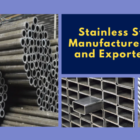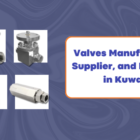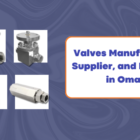What is Buttweld Pipe Fittings and Advantages of Butt Weld Pipe Fittings using in Chemical and Petrochemical Industries
In the demanding environments of the chemical and petrochemical industries, the integrity and reliability of piping systems are paramount. Among the various components used to construct these systems, buttweld pipe fittings stand out for their exceptional strength and durability. These fittings, designed to connect sections of pipe seamlessly through welding, play a crucial role in ensuring efficient and safe operations. Understanding what butt weld pipe fittings are and their advantages can help in making informed decisions for building robust and long-lasting piping networks in these critical industries.
What are Buttweld Pipe Fittings?
Buttweld pipe fittings are a type of piping component used to join two sections of pipe or change the direction of flow. These fittings are welded directly onto the pipe, ensuring a strong and permanent connection. Buttweld fittings include elbows, tees, reducers, caps, and stub ends, all designed to be welded on-site. The term “buttweld” comes from the method of connecting the fittings: the pipes and fittings are butted together and then welded around the circumference, creating a seamless and robust joint.
Types of Buttweld Pipe Fittings:
Buttweld pipe fittings come in various types and sizes to meet the diverse needs of piping systems. Each type of fitting serves a specific purpose, ensuring that the system operates efficiently and safely. Here are the most common types of buttweld pipe fittings:
1. Elbows
- Function: Elbows change the direction of the flow in the piping system.
- Angles: Typically available in 45° and 90° angles. There are also 180° elbows for reversing flow direction.
- Applications: Used in situations where the piping layout requires changes in direction, such as around corners or obstacles.
2. Tees
- Function: Tees split or combine the flow of a fluid.
- Types:
- Equal Tees: The branch has the same diameter as the main pipe.
- Reducing Tees: The branch has a smaller diameter than the main pipe.
- Applications: Commonly used in branch connections for distributing or collecting fluids.
3. Reducers
- Function: Reducers connect pipes of different diameters.
- Types:
- Concentric Reducers: The centreline of the smaller end is in line with the centreline of the larger end. Used for vertical piping.
- Eccentric Reducers: The centreline of the smaller end is offset. Used for horizontal piping to maintain the same top or bottom level.
- Applications: Used to transition between different pipe sizes, often seen in pump inlet and outlet connections.
4. Caps
- Function: Caps close the end of a pipe.
- Applications: Used to seal off the end of a piping system, often in temporary or permanent applications.
5. Stub Ends
- Function: Stub ends are used with lap joint flanges to provide a flat face for bolting.
- Applications: Used in systems where the piping needs to be frequently dismantled for inspection, cleaning, or replacement.
6. Crosses
- Function: Crosses are like tees but with four connections.
- Applications: Used in systems requiring four-way connections, but less common due to the stress and complexity they introduce to the piping system.
7. Bends
- Function: Bends are similar to elbows, but are typically custom-fabricated and have a larger radius.
- Applications: Used where standard elbows are not suitable, providing smoother flow transitions.
8. Return Bends
- Function: Return bends reverse the direction of the flow, similar to 180° elbows.
- Applications: Often used in heat exchangers and coil-type piping systems.
Each of these fittings plays a critical role in the design and functionality of piping systems, ensuring that fluid flow is managed effectively and safely across various industrial applications, particularly in chemical and petrochemical industries.
Advantages of Butt Weld Pipe Fittings in Chemical and Petrochemical Industries
1. Strong and Reliable Joints
One of the main advantages of butt weld fittings is the strength and reliability of the joints they create. The welding process forms a continuous metal structure between the pipe and the fitting, which is less likely to leak compared to mechanical joints. This strength is crucial in the chemical and petrochemical industries, where pipes often carry hazardous and high-pressure fluids.
2. Smooth Interior Surface
Buttweld fittings provide a smooth interior surface with no internal threading or protruding parts. This smoothness minimizes turbulence and pressure drops within the piping system, which is essential for maintaining efficient flow rates and preventing erosion or corrosion over time.
3. Durability and Longevity
Made from high-quality materials like stainless steel, alloy steel, and other corrosion-resistant alloys, butt weld fittings are designed to withstand harsh conditions. In chemical and petrochemical plants, where pipes are exposed to various corrosive substances and extreme temperatures, the durability of buttweld fittings ensures long-term performance and reduces maintenance needs.
4. Versatility and Flexibility
Buttweld fittings come in a wide range of sizes, shapes, and materials, making them suitable for various applications within the chemical and petrochemical industries. Whether it’s a high-temperature process or a system carrying highly corrosive chemicals, there are butt weld fittings designed to meet specific needs. Their versatility allows engineers to design complex piping systems with numerous changes in direction and elevation.
5. Enhanced Safety
Safety is paramount in the chemical and petrochemical industries. Buttweld fittings, with their strong and leak-proof connections, contribute to safer working environments by reducing the risk of leaks and potential exposure to hazardous substances. The welded joints also eliminate the need for potentially weak mechanical connections, further enhancing system integrity.
6. Cost-Effective Over Time
While the initial installation of buttweld fittings might be more labor-intensive compared to other types of fittings, their long-term benefits make them cost-effective. The reduced risk of leaks, lower maintenance requirements, and longevity of the fittings mean that over time, the overall cost of maintaining the piping system is lower.
7. Compliance with Standards
Buttweld fittings are manufactured to meet various international standards, ensuring compatibility and reliability. These standards include ASTM, ASME, and ANSI specifications, which provide guidelines on material properties, dimensions, and testing methods. Compliance with these standards ensures that the fittings are suitable for use in critical applications within the chemical and petrochemical industries.
Applications of Buttweld Pipe Fittings in Chemical and Petrochemical Industries
1. Chemical Processing Plants
In chemical processing plants, various chemicals are produced, refined, and transported. Buttweld pipe fittings are used to construct the intricate piping systems required for these processes, providing reliable connections that can withstand high pressures and temperatures, as well as corrosive substances.
2. Petrochemical Plants
Petrochemical plants convert natural gas and crude oil into valuable products such as plastics, fertilizers, and fuels. The robust nature of buttweld fittings ensures that these plants can operate efficiently without frequent maintenance or downtime, even under extreme conditions.
3. Refineries
Refineries process crude oil into various useful products, including gasoline, diesel, and jet fuel. The high temperature and pressure environments in refineries demand the use of durable and leak-proof fittings like buttweld fittings, which can handle the rigorous conditions.
4. Pharmaceutical Industry
In the pharmaceutical industry, the purity of products is critical. Buttweld fittings, with their smooth internal surfaces and reliable joints, help maintain the sanitary conditions necessary for producing pharmaceuticals, minimizing the risk of contamination.
5. Fertilizer Production
Fertilizer production involves handling various aggressive chemicals. Buttweld fittings made from corrosion-resistant materials ensure that the piping systems remain intact and leak-free, safeguarding the integrity of the production process.
6. Food and Beverage Industry
Although primarily used in chemical and petrochemical industries, buttweld fittings are also valuable in the food and beverage industry, where sanitary conditions are paramount. The smooth interior surfaces of buttweld fittings prevent contamination and ensure the cleanliness of the production processes.
7. Power Generation
In power plants, particularly those using fossil fuels, buttweld pipe fittings are essential for constructing pipelines that transport steam, water, and other fluids. Their ability to withstand high pressures and temperatures makes them ideal for these demanding applications.
8. Water Treatment Plants
Water treatment plants use various chemicals to purify water. Buttweld fittings provide reliable and corrosion-resistant connections in the piping systems that transport these chemicals, ensuring the efficiency and safety of the treatment processes.
9. Oil and Gas Industry
In the oil and gas industry, buttweld fittings are used in the construction of pipelines that transport crude oil and natural gas from extraction sites to processing facilities. Their strength and durability are crucial for preventing leaks and ensuring the safe transportation of these valuable resources.
Buttweld pipe fittings play a critical role across a wide range of applications within the chemical and petrochemical industries, as well as other sectors that demand high-performance piping systems. Their reliable, durable, and efficient nature makes them indispensable for maintaining the integrity and efficiency of these complex industrial processes.
Buttweld pipe fittings are a vital component in the infrastructure of chemical and petrochemical industries. Their robust, durable, and reliable nature makes them an excellent choice for handling the demanding conditions of these industries. With advantages like strong joints, smooth interiors, and enhanced safety, buttweld fittings help ensure efficient and safe operations. Investing in high-quality buttweld fittings is a strategic decision that pays off in the long run through reduced maintenance costs and increased system reliability.






